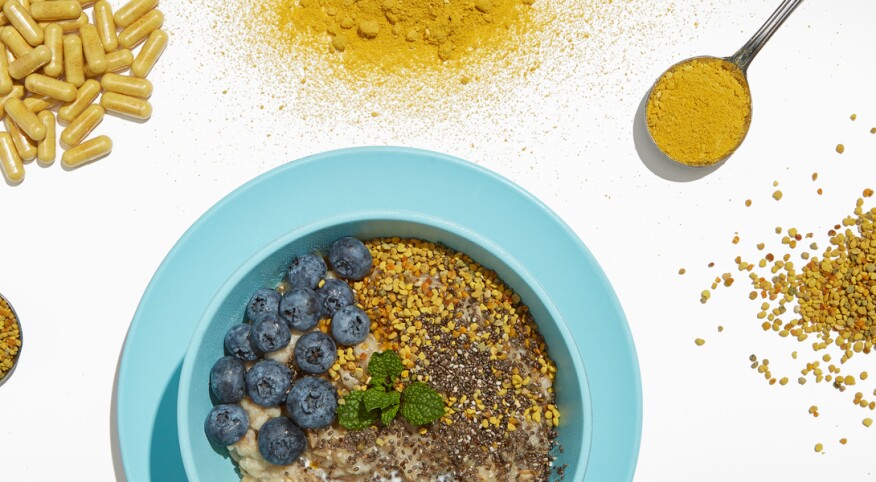On the health-trend buzz-o-meter, this one can’t be topped. Bee pollen — yellowy pellets usually consumed in granule form — is a protein-rich vegetarian superfood that can do everything from soothe inflammation to increase energy. Victoria Beckham once tweeted that she’s “totally obsessed” with it, while Miranda Kerr has raved that the ingredient is part of her diet.
So, we’re talking actual bee pollen? Yes! A bumble bee collects pollen from flowers, and if you look closely at a buzzing one in the summer, you can spot the pellets on its legs. The bee takes this pollen back to its hive and stores them in honeycomb cells. Beekeepers then gather the pellets and harvest them. The pollen itself is a mixture of pollen, saliva and nectar.
What makes it so special? NBD, but 1 pound of fresh bee pollen — available online and in health food aisles — contains 22 grams of amino acids (more than the contents in animal-based products such as beef, cheese and eggs), 18 vitamins, 25 minerals, 11 enzymes, 14 fatty acids and 11 carbohydrates, and is approximately 25 percent protein. No wonder it has been used around the world for centuries, and has been
cited by researchers as being beneficial for your health in various ways.
But what can it
really
do? Due to its high level of B1, B2 and B3 vitamins (all essential for a healthy nervous system), pollen may be effective in reducing stress and anxiety,
research finds. The flavonoid plant compounds possess anti-inflammatory properties, which can relieve pain and swelling as well as promote healing from cuts and scrapes. Its vast mineral content can help stimulate the circulation of blood to skin cells, making the skin less vulnerable to blemishes and wrinkles. Perhaps most impressive of all, its high protein keeps energy levels high and helps your metabolism to work more efficiently.
How do I use it? You
can eat it raw. But if you’ve only seen bee pollen in your garden, you should introduce it into your diet slowly. Sprinkle a granule or two of the supplement in a smoothie, cereal, yogurt, hot tea or salad. Gradually increase it 1-2 teaspoons a day. (If you decide to take it in pill form, follow the dosage directions on the product packaging.)
Side effects? Individuals with allergies to bees, pollen and honey should avoid it. And, of course, speak to your doctors before taking any supplement. Got to “bee” healthy!

Jeff Elkins









